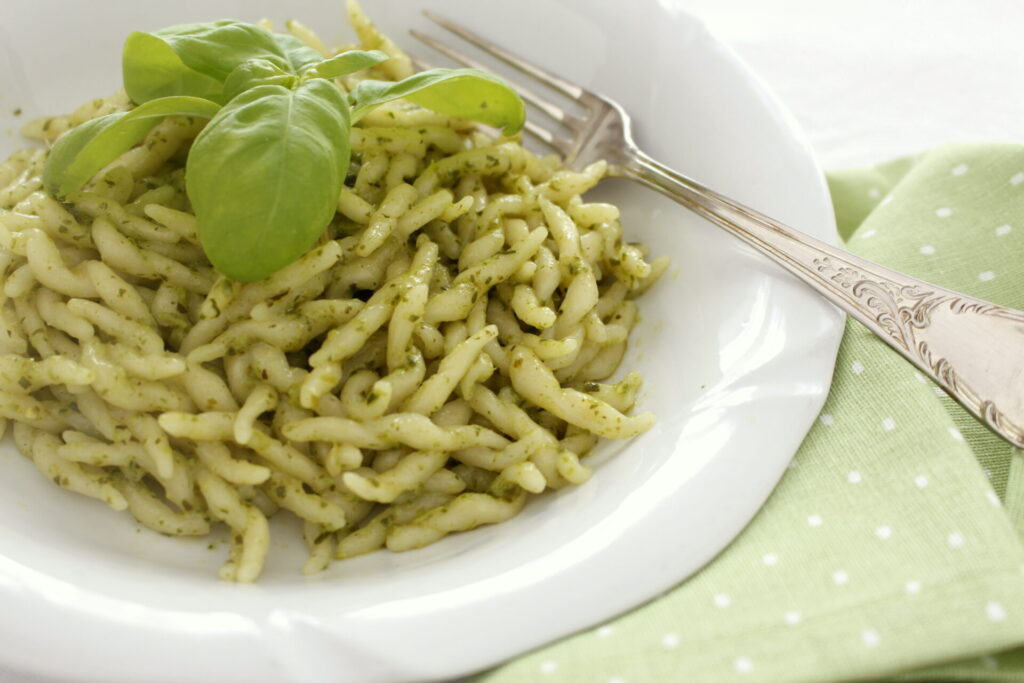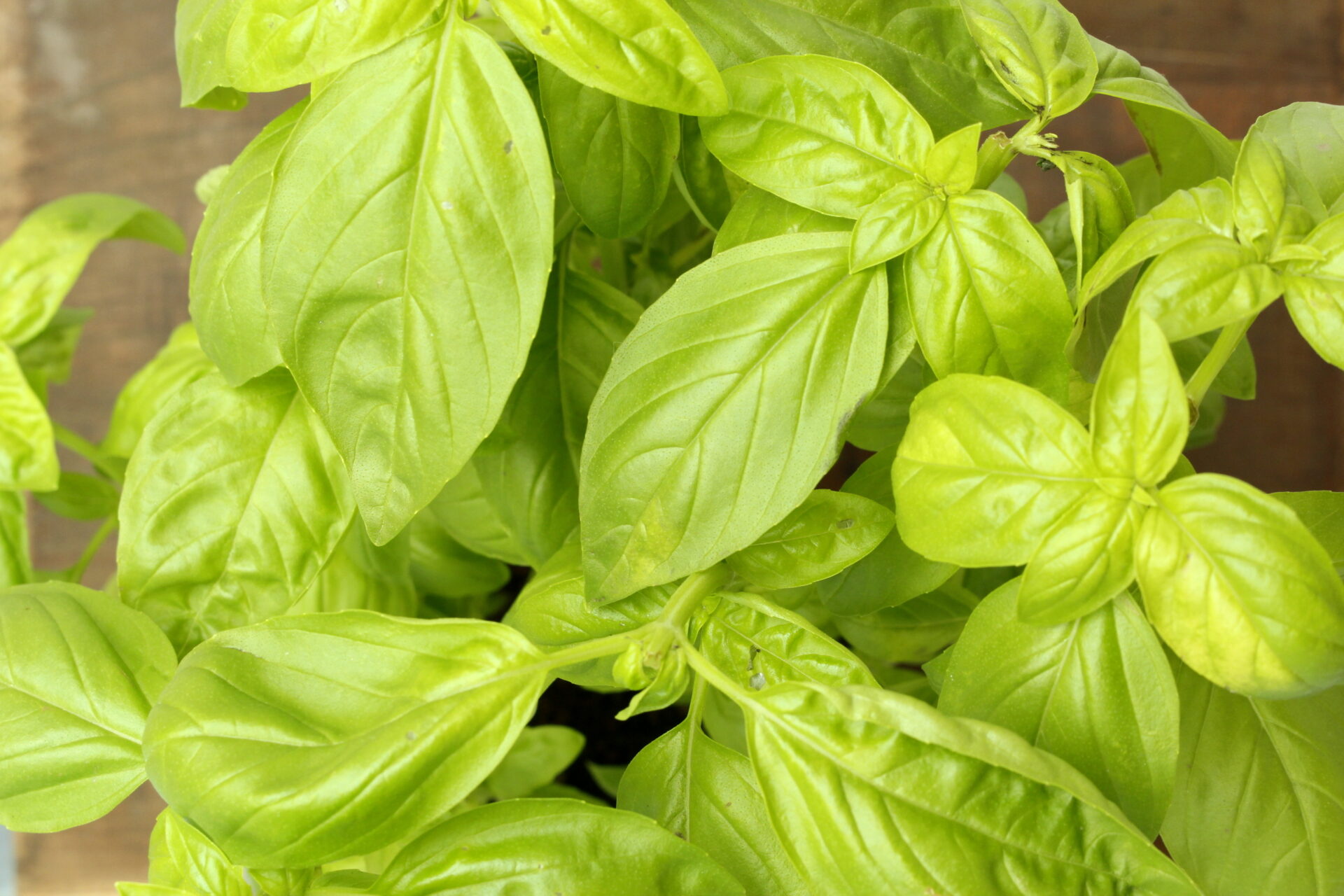Trofie (TRO-fee-ay) pasta with pesto is one of the most classic dishes of the Ligurian cuisine and without doubt one of the tastiest when prepared, of course, with homemade pesto.
The basil grown in Liguria is very fragrant and adds a unique flavor to pesto. I always recommend the use of homemade pesto, its taste and the aroma is highly superior industrially-prepared ones. It’s fast to make, especially if you use a blender; even if tradition calls for using a mortar (see note). Pesto sauce, for its consistency, is an ideal condiment for trofie (a type of paste made of flour, water and salt, shaped like curled chip), but I also like to use it in pesto lasagna. The name trofie seems to come from the Genoese “strufuggia”, from strofinare, meaning to curl the dough by hand, or perhaps by the Greek word trophe, meaning nourishment. Whatever the origin of the name, the important thing is that the taste is simply inviting.
TROFIE PESTO (TROFIE PASTA WITH PESTO)
Preparation time: 20 minutes Cooking time: 5-6 minutes Servings: 4

INGREDIENTS
480 g (17 oz) trofie
3 cloves of garlic, peeled
70 g (2.5 oz) fresh basil
50 g (¼ cup) pine nuts, toasted
80 ml (1/3 cup) extra virgin olive oil
50 g (½ cup) Parmesan cheese, grated
Sea salt to taste
DIRECTIONS
1. Prepare the pesto (see pesto lasagna recipe)
2. In a pot, boil 3 liters of water, salted to taste. I suggest you use as little as possible for a healthier diet. Pour in the pasta and cook for 5-6 minutes (or according to the time indicated on the package)
6. Before draining the pasta, reserve about 2-3 tablespoons of cooking water. Drain the pasta, season it with the pesto sauce softened with the cooking water. Add some grated Parmesan cheese (optional) and serve hot.
Note: If you do not like the strong flavor of garlic, you can omit it from the pesto. If you prefer a more intense flavor, you can replace the Parmesan cheese with Pecorino cheese.
The traditional recipe for pesto requires the use of a stone mortar in which garlic, basil, salt are crushed using a pestle. Then, the pine nuts are added and the mixtures is mashed further until reduced to a cream. The oil is slowly mixed in and, then, finally, at the end, the cheese.

A classic dish for a very good reason—pesto genovese is incredibly delicious!
Personally, I’m a pecorino guy (or use a mixture of pecorino and Parmesan, which is also quite nice). A reader from Liguria once wrote to me to specify that the *real* cheese to use in pesto is a local fresh cheese called “pescinsoa”. Ever tried it? I’m curious to, but can’t imagine I could find it locally…
I love pesto genovese. A lot of pesto recipes calls for pecorino. I prefer a more delicate version without it. Instead I like pecorino semistagionato with jam (fig jam, grape jam), especially from Pienza (Tuscany). I have not tried prescinseua cheese yet, but I think it could be delicious in pesto . It tastes something in between yogurt and ricotta cheese.